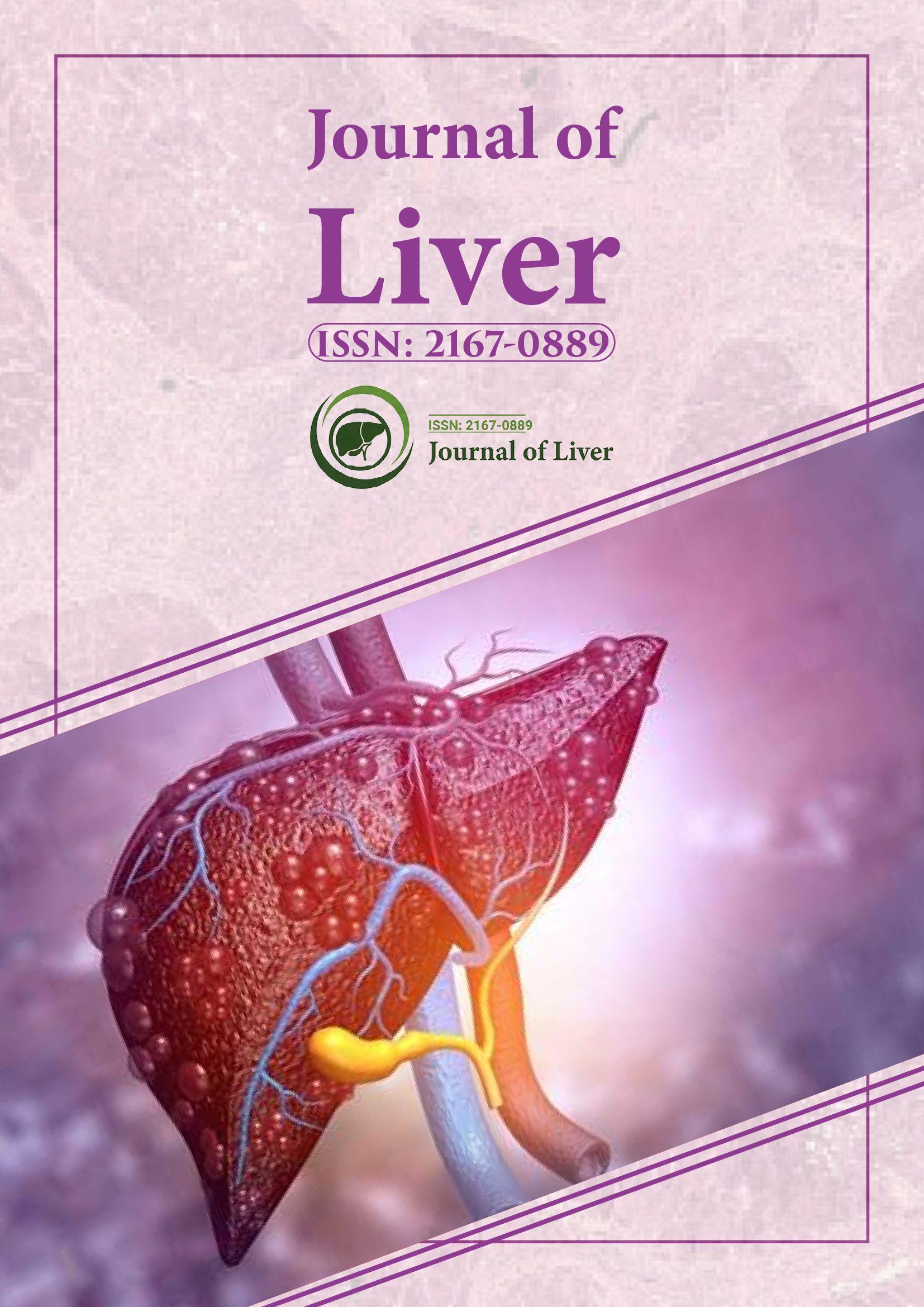Indexed In
- Open J Gate
- Genamics JournalSeek
- Academic Keys
- RefSeek
- Hamdard University
- EBSCO A-Z
- OCLC- WorldCat
- Publons
- Geneva Foundation for Medical Education and Research
- Google Scholar
Useful Links
Share This Page
Journal Flyer

Open Access Journals
- Agri and Aquaculture
- Biochemistry
- Bioinformatics & Systems Biology
- Business & Management
- Chemistry
- Clinical Sciences
- Engineering
- Food & Nutrition
- General Science
- Genetics & Molecular Biology
- Immunology & Microbiology
- Medical Sciences
- Neuroscience & Psychology
- Nursing & Health Care
- Pharmaceutical Sciences
Commentary - (2025) Volume 14, Issue 1
Cirrhosis Progression in the Presence of Metabolic Disorders
Filippo Luscher*Received: 25-Feb-2025, Manuscript No. JLR-25-29104; Editor assigned: 27-Feb-2025, Pre QC No. JLR-25-29104 (PQ); Reviewed: 13-Mar-2025, QC No. JLR-25-29104; Revised: 20-Mar-2025, Manuscript No. JLR-25-29104 (R); Published: 27-Mar-2025, DOI: 10.35248/2167-0889.25.14.244
Description
Cirrhosis represents the advanced stage of chronic liver injury, where normal hepatic tissue is replaced with fibrotic bands and regenerative nodules. It results from a wide range of liver insults, including chronic viral hepatitis, alcohol abuse and increasingly, Non-Alcoholic Fatty Liver Disease (NAFLD). In recent years, NAFLD has emerged as one of the most common underlying causes of cirrhosis, largely due to the rising incidence of obesity and Type 2 Diabetes Mellitus (T2DM) globally.
While the hepatic consequences of cirrhosis are well documented, less attention has been given to the interplay between metabolic health and liver disease progression. Cardiometabolic risk factors which include central obesity, impaired glucose metabolism, high blood pressure and abnormal lipid levels are not only associated with NAFLD but also contribute to complications in patients with established cirrhosis.
Obesity and cirrhosis
Obesity plays a significant role in both the development and progression of liver disease. It is a major contributor to NAFLD, which encompasses a spectrum from simple steatosis to Non-Alcoholic Steatohepatitis (NASH), a condition that can progress to fibrosis and cirrhosis. Excess adipose tissue contributes to chronic low-grade inflammation through the release of adipokines and pro-inflammatory cytokines. This inflammatory state promotes hepatic injury and scarring.
In individuals with existing cirrhosis, obesity may affect the disease trajectory in several ways. It can worsen insulin resistance, further aggravating hepatic steatosis and inflammation. It may increase the risk of Hepatocellular Carcinoma (HCC), particularly in NASH-related cirrhosis. Surgical outcomes, including liver transplantation, are often more complex in obese patients.
Dyslipidemia and lipid metabolism
Lipid metabolism is significantly altered in chronic liver disease. In early stages, patients may present with elevated triglycerides and low HDL levels, particularly in NAFLD-related cirrhosis. As liver function deteriorates, lipid synthesis declines, leading to a paradoxical normalization or even reduction in serum lipid levels. This does not necessarily indicate metabolic improvement but rather reflects hepatic dysfunction.
Despite the complex alterations in lipid profiles, dyslipidemia remains a modifiable risk factor. Its presence contributes to cardiovascular complications, which are common yet often overlooked in cirrhotic populations. Statins, although once avoided in liver disease, are increasingly being used under careful supervision, with studies suggesting that they may offer benefits beyond lipid control, including reduced portal pressure and improved endothelial function.
Hypertension and cardiovascular burden
Systemic hypertension is frequently observed in individuals with metabolic syndrome and is also common in those with cirrhosis. The combination of portal hypertension and systemic hypertension creates unique challenges in managing circulatory dynamics.
Cirrhotic cardiomyopathy, a condition characterized by impaired cardiac response to stress, diastolic dysfunction and electrophysiological changes, may be exacerbated by underlying hypertensive disease. Additionally, the risk of atrial fibrillation and ventricular arrhythmias is elevated, particularly in decompensated stages.
Patients with cirrhosis are at increased risk for cardiovascular events due to systemic inflammation, endothelial dysfunction and metabolic abnormalities. The traditional belief that cirrhosis protects against atherosclerosis due to low cholesterol levels has been challenged by recent data showing that cardiovascular disease is a leading cause of death in compensated cirrhosis.
Clinical course of cirrhosis
Cirrhosis progresses through compensated and decompensated stages. Metabolic factors may influence this progression in several ways.
Accelerated fibrosis: Patients with diabetes and obesity often show faster fibrosis progression. Chronic inflammation and oxidative stress linked to metabolic syndrome stimulate hepatic stellate cells, leading to increased collagen deposition.
Earlier onset of complications: Individuals with metabolic comorbidities may experience earlier onset of ascites, variceal bleeding and hepatic encephalopathy.
Increased risk of liver cancer: Obesity and diabetes are independently associated with higher risks of hepatocellular carcinoma, even in patients with compensated cirrhosis.
Reduced transplant eligibility: Metabolic comorbidities may reduce the eligibility or success rate of liver transplantation due to poor surgical outcomes, increased cardiovascular risk, or associated kidney disease.
The interaction between cardiometabolic risk factors and liver cirrhosis is increasingly evident, with metabolic syndrome contributing not only to the onset but also to the complications and outcomes of chronic liver disease. Addressing these risk factors is essential in preventing disease progression, managing complications and improving long-term survival. As understanding of this intersection evolves, clinicians must adopt a comprehensive, risk-based approach that integrates both hepatic and metabolic health considerations.
Citation: Luscher F (2025). Cirrhosis Progression in the Presence of Metabolic Disorders. J Liver. 14:244.
Copyright: © 2025 Luscher F. This is an open-access article distributed under the terms of the Creative Commons Attribution License, which permits unrestricted use, distribution, and reproduction in any medium, provided the original author and source are credited.
